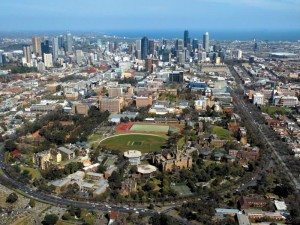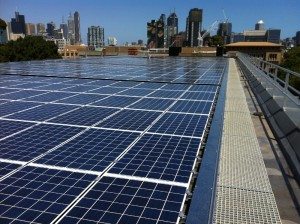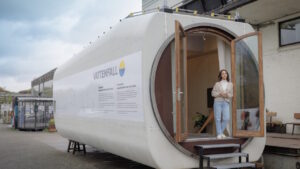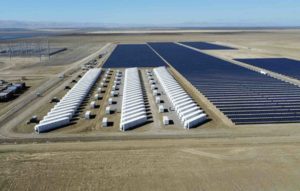One week after the University of New England announced plans to build a self-funded solar array that would halve its grid electricity use, the University of Melbourne has called for tenders to install close to 2MW of rooftop solar across its Victorian campuses.

The tender, issued on Monday by the University’s Infrastructure Services, calls for expressions of interest from a panel of up to four solar PV providers to design, install and maintain an estimated total of 1.8MW of solar systems on as many as 18 rooftops across the University’s Parkville, Southbank, Dookie, Burnley and Werribee campuses.
The new PV arrays would add to the 100kW system installed early last year on the rooftop of the University’s Wilson Hall building, which was completed without the assistance of an up-front STC discount and using “unique flat mounted panels”.
The new solar PV installations, worth an estimated $3.1 million, will kick off a program of works supported by the Clean Energy Finance Corporation, announced early this year.
The CEFC said in February it would loan up to $9.1 million to the University of Melbourne, to accelerate the installation of solar PV and other renewable and energy efficiency technologies in an effort to cut energy costs and improve the University’s sustainability.
The University expects the measures – including voltage optimisation, freezer upgrades, and the installation of solar PV, solar thermal and wind micro-turbines – to reduce its grid electricity use (which is, apparently, on par with a town the size of Warrnambool) by around 8 per cent.
The voltage optimisation equipment – which controls and corrects incoming power voltage to increase building energy efficiency – is expected to produce the biggest energy saving, reducing consumption by more than 4GWh per annum. It also has the added benefit of reducing operating and maintenance costs.
“Australia’s 39 universities make a major contribution to the national economy and to the Australian community,” CEFC executive director of corporate and project finance, Paul McCartney, said at the time.
“Clean energy installations like those being undertaken by the University of Melbourne can help universities meet these challenges through an investment that results in reduced environmental impact, higher productivity and stronger financial performance.”
Of course, Melbourne University is just one of many Australian tertiary institutions choosing to invest in solar and cut their grid electricity dependence, including the University of New England in NSW, as mentioned above and reported here last week.
Early last year, the University of Queensland’s Gatton campus completed installation of what amounted to the state’s biggest solar array – a 3.275MW mix of fixed tilt, single axis tracking and dual axis tracking PV panels, to which it has since added a 760kWh battery storage system, using Kokam technology installed by MPower.
The unique facility was designed not only to cut grid power use for UQ, but to serve as one of the most sophisticated and largest research solar PV pilot plants in the world, with multiple goals, including to test the relative performance and cost-effectiveness of single axis and twin axis trackers.
The UQ solar array will also be comparing the relative performance of silicon panels (it has 1.2MW of these on its Brisbane St Lucia campus) and thin film panels; as well as the impact of passing cloud cover, how often panels should be washed, and what maintenance costs.
Earlier this month, UQ added four of Tritium’s Veefil 50kW DC electric vehicle fast chargers to its list of clean tech credentials. The chargers, installed at the university’s Gatton and St Lucia campuses, will be powered by the university’s existing solar power arrays and available for use – free of charge – by staff, students and the broader public.
This article was originally published on RenewEconomy sister site, One Step Off The Grid. Sign up for the weekly newsletter here










